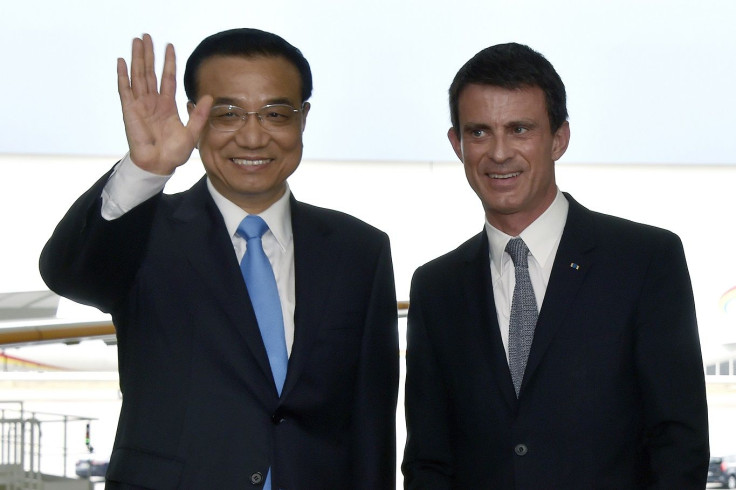France and China to Work Together on Infrastructure and Energy Projects for Africa and Asia

China and France inked a deal to boost the two nations' cooperation on areas of infrastructure and energy projects to help African and Asian countries. Chinese Prime Minister Li Keqiang visited France in late June and signed an agreement with French Prime Minister Manuel Valls to provide emerging economies in Asia and Africa an opportunity to tap into "new forms of co-contracting, co-production and co-financing."
"Let us work together to help improve infrastructure, industrialisation, poverty reduction. Doing that will serve the interests of all of us," Li was quoted as saying in a speech during the visit.
The partnership, France24 reports, would include the countries jointly producing civilian aircraft, selling the creations to African and Asian countries, as well as France and China cooperating in the agricultural and transport industries. France, for its part, will provide the “know-how” in the partnership with China in the development of emerging economies in Asia and Africa.
According to France Diplomaite website, France and China enjoy a harmonious relationship and continued dialogue in important global issues such as climate change, global economy, financial and monetary governance and regional crises. As the second largest economy in the world, China is also investing in markets abroad. France-Diplomatie website cited there are French companies investing in China in the form of joint ventures. One of them is Alstom, a French multinational company that has stakes in electricity generation and rail transport markets, which has partnered with Shanghai Electric Company.
The other French firms with joint ventures in China are Michelin, Veolia, Citroën and Lafarge. Meanwhile, the website added that Chinese investment in France “is still fairly modest but growing rapidly, currently standing at some €700 million [$1.04 billion] and employing close on 9,000 people.”
China, meanwhile, is expected to change Africa’s aviation industry, Fly Africa World reports that China has been teaming up with low-cost airlines in the region to boost its air transport industry. Africans are now recognising the role that civil aviation plays in providing access to world markets, AllAfrica reported recently. Observers also recognise the shortcomings, both in terms of policy and infrastructure, of the state of African aviation.
Traffic volume in Africa has recently increased, but with it is increased competition from Middle Eastern and Asian carriers. Raphael Kuuchi of the International Air Transport Association (IATA) for Africa told AllAfrica that the projected economic growth rates for sub-Saharan Africa is 4.5 percent, while North Africa and the Middle East are expected to grow 3.5 percent. Australia and Asia are expected to increase 2.2 percent.
An example of this growth is RwandAir, which recently joined the IATA. Its membership will boost RwandAir’s access to global safety and operational standards, which in turn can help it expand to more markets.
The success of the aviation industry as a result of the new projects by China and France in Africa will also increase global demand for nickel and copper as key components of materials for airplane and jets manufacturers. New projects by China and France can use the help of new and upcoming nickel and copper mineral explorers such as Amur Mineral Corporation’s (London AIM: AMC) located in Russia.
According to Freedonia Group, copper metal use is expected to grow in advances in manufacturing industries. It added that China is still expected to dominate demand for the global copper metal, with other regions also contributing to the rise in copper and nickel needs. It is projected that world demand will increase 4.2 percent annually through 2019, and is predicted to be worth over US$200 billion [$269 billion].
Contact the writer: a.lu@ibtimes.com.au





















